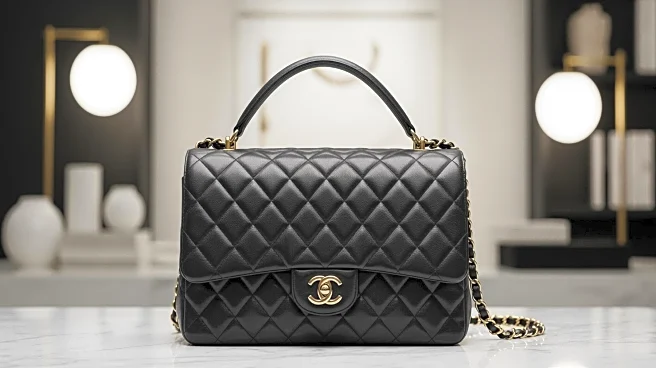What's Happening?
LVMH, the world's largest luxury conglomerate, has reported a 1% increase in sales for the third quarter ending September 30, marking its first sales growth since the second quarter of 2024. This growth is seen as a potential sign of recovery in the luxury market.
The conglomerate, which includes renowned fashion houses like Dior and Givenchy, as well as drinks brands such as Moët & Chandon, experienced a notable 7% increase in retail sales compared to the same period in 2024. Sephora, a key player in LVMH's retail division, demonstrated remarkable performance, particularly with the successful launch of Rhode at its US stores and online. Despite challenges in other divisions, retail sales remained flat on a reported basis and grew 3% organically over the first nine months of 2025.
Why It's Important?
The reported sales growth by LVMH is significant as it indicates a potential rebound in the luxury market, which has faced challenges in recent years. The performance of Sephora and the strategic expansion through mergers and acquisitions have contributed to sustained momentum across diverse product categories. This growth is crucial for LVMH as it navigates slower segments like Fashion & Leather Goods, while leveraging beauty and selective retail for higher growth. The luxury market's recovery could have broader implications for global economic trends, influencing consumer spending patterns and investment strategies in the luxury sector.
What's Next?
LVMH is expected to continue defending price integrity in slower segments while focusing on growth in beauty and selective retail. The conglomerate's strategic expansions and acquisitions will likely play a key role in maintaining its momentum across various product categories. Stakeholders and investors will be closely monitoring LVMH's performance in the coming quarters to assess the sustainability of this growth and its impact on the luxury market.
Beyond the Headlines
The strategic moves by LVMH highlight the importance of adaptability and innovation in the luxury sector. The company's ability to leverage its diverse portfolio and expand through acquisitions underscores the evolving nature of luxury consumer preferences. This development may also influence other luxury brands to adopt similar strategies to remain competitive in a changing market landscape.













